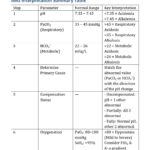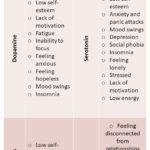A Smarter Way to Interpret ABGs: Better Than ROME or Tic-Tac-Toe! If you’re a healthcare student or professional trying to make sense of Arterial Blood Gases (ABGs), you’ve probably heard of shortcuts like ROME (Respiratory Opposite, Metabolic Equal) or the tic-tac-toe method. But let’s be honest—those tricks often fall short when things get more complex. This ABG … [Read more...] about Step-by-Step ABG Interpretation Guide: Smarter Than ROME and Tic-Tac-Toe
Uncategorized
Navigating the Ethical Tightrope: Balancing Safety and Autonomy in Suicide Risk Management
Working with individuals who experience recurrent suicidal thoughts and crises is one of the most challenging aspects of mental health care. These situations inherently create complex ethical dilemmas, forcing clinicians and care teams to navigate the delicate balance between ensuring safety and respecting a person's autonomy. The immediate instinct when faced with suicide … [Read more...] about Navigating the Ethical Tightrope: Balancing Safety and Autonomy in Suicide Risk Management
Elegant Modern Gold Mala Set with Earrings – Under PKR 110,000
This exquisite gold mala set combines traditional charm with modern design. It features a sleek chain adorned with intricately designed gold pendants and comes with matching earrings, perfect for weddings, festive occasions, or formal events. Available under PKR 110,000, this set adds timeless elegance to your jewelry collection. Our Elegant Modern Gold Mala Set offers a … [Read more...] about Elegant Modern Gold Mala Set with Earrings – Under PKR 110,000
Tulane University Scholarships for International Students in the USA 2024
Tulane University Scholarships for International Students in the USA 2024 Tulane University is a private research university located in New Orleans, Louisiana. It is a member of the Association of American Universities and is ranked among the top 50 universities in the United States. Tulane offers a variety of scholarships for international students, including merit-based … [Read more...] about Tulane University Scholarships for International Students in the USA 2024
How a Lack of Happiness Affects You: The 4 Brain Chemicals and Their Symptoms
How Low Levels of Dopamine, Endorphins, Serotonin, and Oxytocin Can Affect Your Mood Happiness is a complex emotion that is influenced by a variety of factors, including our thoughts, behaviors, and brain chemistry. When we are happy, our brains release chemicals such as dopamine, endorphins, serotonin, and oxytocin. These chemicals have a number of positive effects on our … [Read more...] about How a Lack of Happiness Affects You: The 4 Brain Chemicals and Their Symptoms



